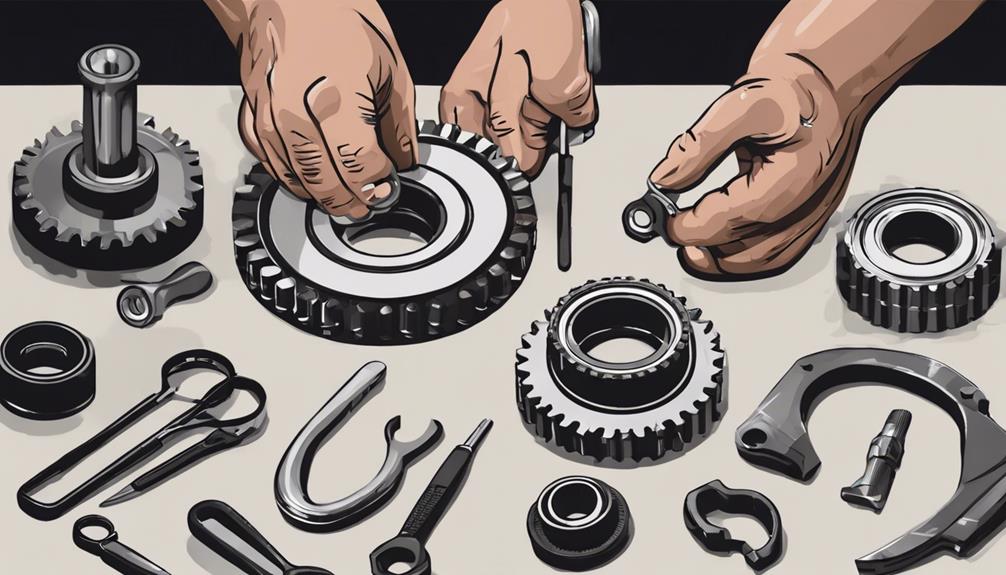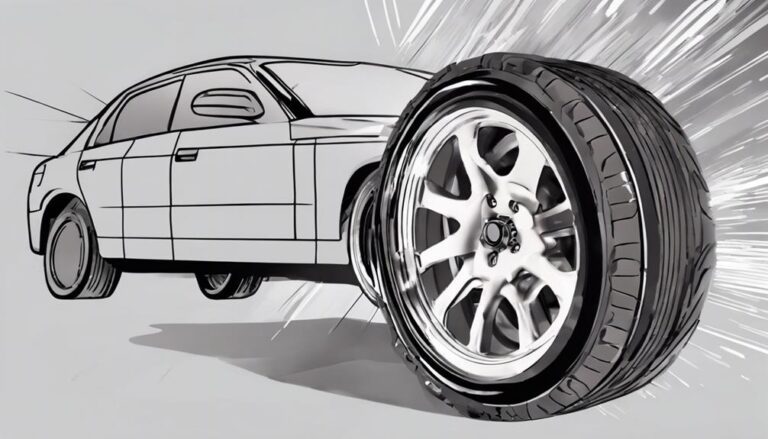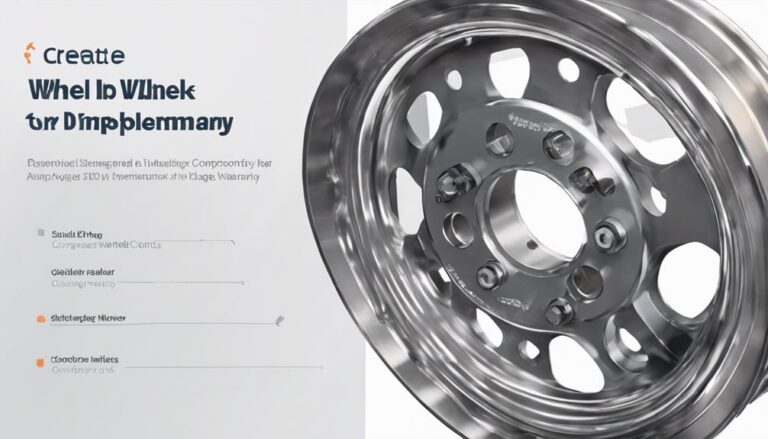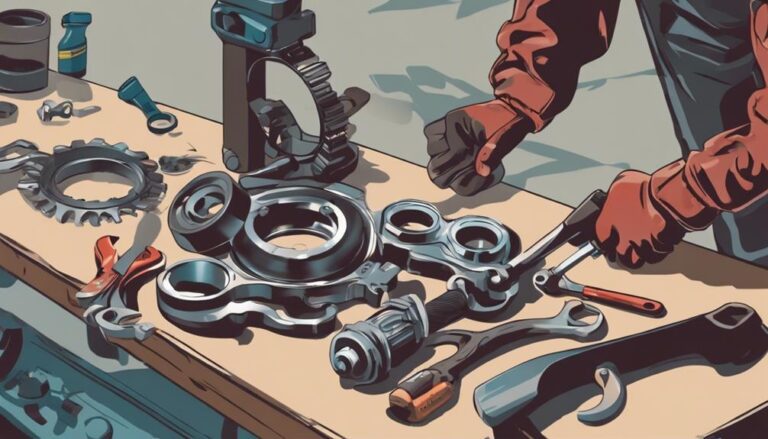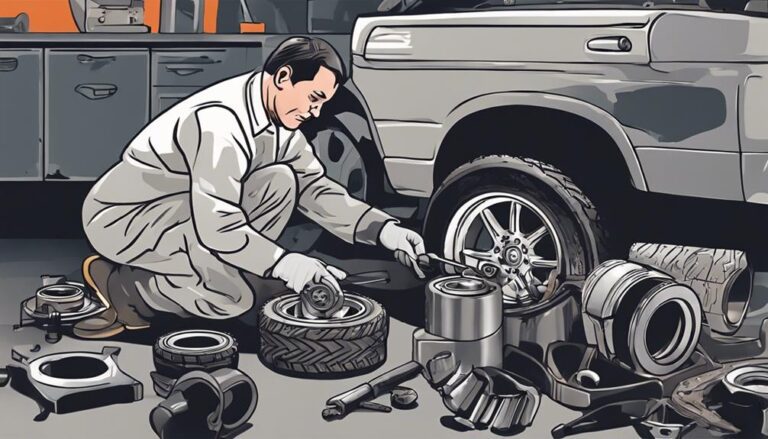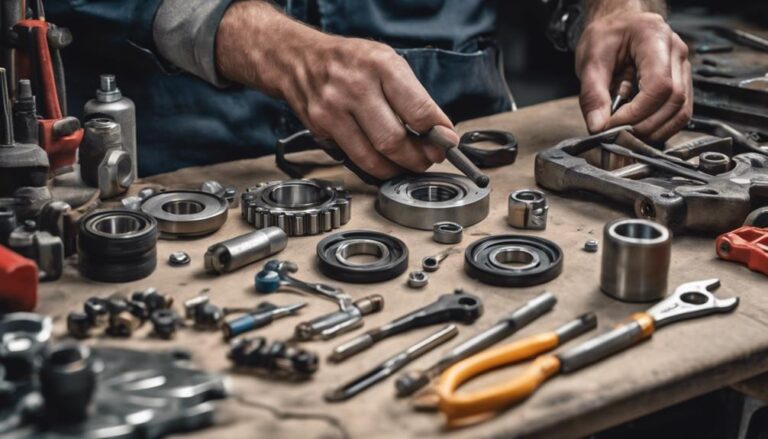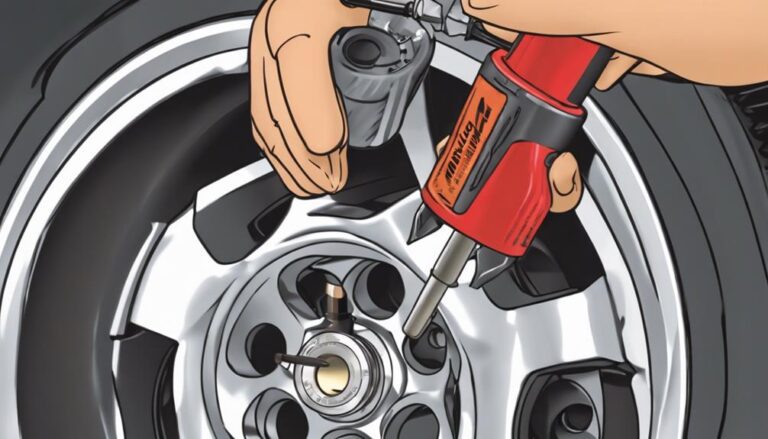10 Best Tips for Upgrading Wheel Bearings
When it comes to upgrading wheel bearings, you need to make sure you're laying a solid foundation for your vehicle's performance. Imagine your car's wheels as the pillars supporting its smooth ride.
Now, imagine the impact of enhancing those crucial components with the 10 best tips at your disposal. Each tip holds the key to maximizing efficiency and safety on the road.
Let's explore how these expert strategies can elevate your driving experience.
Key Takeaways
- Choose quality bearings from reputable brands for longevity and performance.
- Adhere to meticulous installation procedures for durability and reliability.
- Opt for heat-resistant bearings and proper cooling mechanisms to prevent damage.
- Follow manufacturer guidelines and seek professional installation for optimal function.
Proper Installation
To guarantee the longevity and best performance of your wheel bearings, meticulous attention to proper installation procedures is imperative. When installing wheel bearings, it's important to work in a clean environment using clean tools to prevent contaminants that could potentially damage the bearings. Additionally, avoid reusing old seals or parts as this can compromise best performance and lead to premature failure.
Follow correct mounting processes meticulously to make sure that the bearings are securely and accurately installed. For press-fit cylindrical bores, make sure a snug fit, and for tapered sleeves on tapered bores, follow specific guidelines to guarantee proper mounting. These steps are essential in preventing premature failure and maximizing the lifespan of your wheel bearings.
Correct Lubrication
When considering the lubrication of wheel bearings, meticulous attention to using manufacturer-recommended lubricants is paramount for ensuring perfect bearing operation. Proper lubrication plays a pivotal role in the longevity and performance of bearings. Failure to use the correct lubricants can result in premature bearing failure, leading to costly repairs. It is essential to adhere to regular inspection, cleaning, and repacking schedules with the appropriate grease to maintain ideal bearing functionality. Consult with technical experts or follow manufacturer guidelines to guarantee accurate lubrication practices. Below is a table summarizing the importance of proper lubrication for wheel bearings:
| Aspect | Impact |
|---|---|
| Manufacturer-recommended | Ensures ideal bearing operation |
| Regular maintenance | Enhances bearing longevity and performance |
| Incorrect lubrication | Leads to premature bearing failure and repairs |
| Technical guidance | Important for accurate lubrication practices |
| Cost implications | Proper lubrication saves money on repairs |
Invest in Quality Bearings
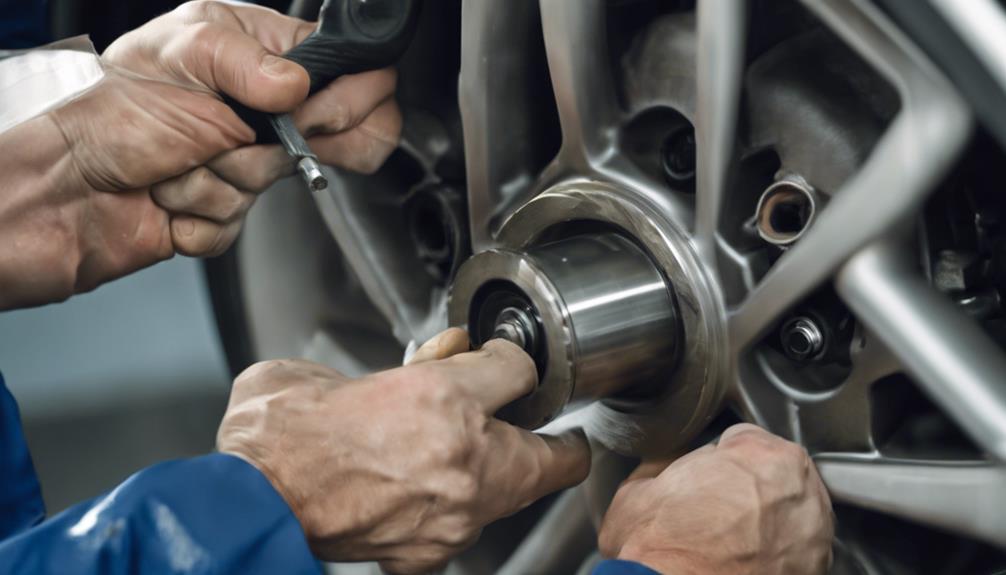
Investing in high-quality bearings is essential for optimizing the performance and longevity of your vehicle's wheel bearings. When considering upgrading your wheel bearings, here are some key reasons why quality bearings are a worthwhile investment:
- Impact on Performance: Quality bearings can have a significant effect on the overall performance of your vehicle by providing smoother operation and improved efficiency.
- Durability and Materials: High-quality bearings are crafted using superior materials and advanced technology, enhancing their durability and resistance to wear and tear.
- Prevention of Premature Wear: Investing in quality bearings can help prevent premature wear and failure, ultimately saving you time and money on frequent replacements.
- Reputable Brands: Consider brands like SKF, Timken, and NSK known for their quality bearings and reliability in the automotive industry.
- Peace of Mind: Quality bearings often come with warranties and guarantees, offering you peace of mind and assurance for your investment in upgrading your wheel bearings.
Avoid Heating Issues
Upgrading to high-performance bearings with superior heat resistance is imperative to prevent damage and premature failure caused by excessive heat in wheel bearings. Heat generation in wheel bearings can be exacerbated by factors such as overloading or aggressive driving. Proper lubrication plays a vital role in dissipating heat and extending the lifespan of the bearings. Upgrading to bearings designed for better heat resistance can greatly enhance durability and performance.
| Factors Contributing to Heating Issues | Ways to Address |
|---|---|
| Overloading or aggressive driving | Upgrade to high-performance bearings with superior heat resistance |
| Improper lubrication | guarantee proper lubrication and maintenance practices are followed |
| Lack of monitoring | Use infrared thermometers to detect overheating early |
| Inefficient cooling system | Consider upgrading to bearings with better cooling mechanisms |
Follow Manufacturer Guidelines
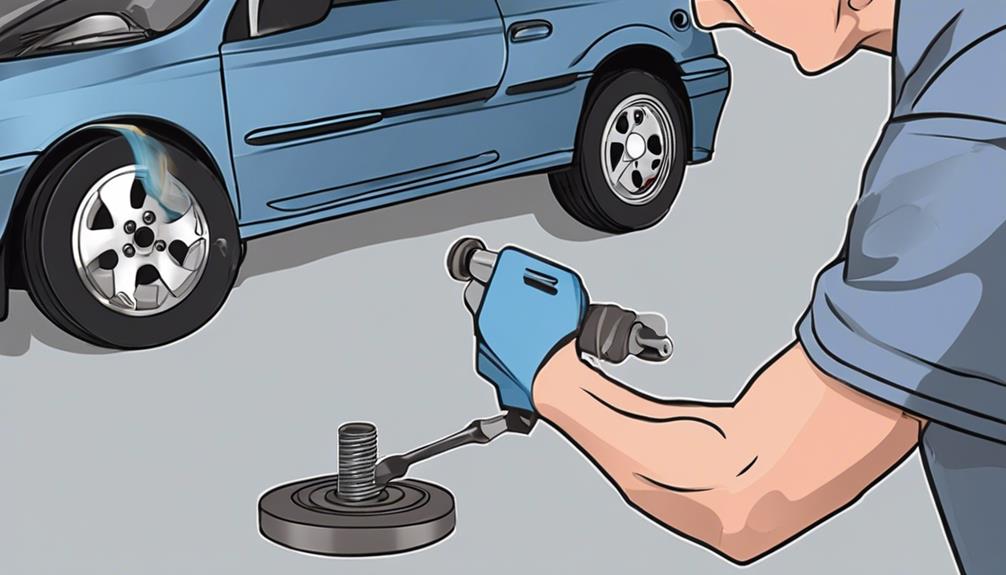
Adhering to the manufacturer's guidelines is essential for ensuring the best performance and longevity of upgraded wheel bearings. When installing new bearings, following these guidelines is critical:
- Manufacturer Guidelines: Always refer to the specific instructions provided by the manufacturer for installation, lubrication, and maintenance.
- Upgraded Bearings: Consider the design and material of the upgraded bearings to ensure they're handled correctly.
- Warranty Compliance: Incorrect lubrication or installation can void warranties and lead to premature bearing failure.
- Longevity: Following manufacturer recommendations guarantees the best possible performance and lifespan for the upgraded wheel bearings.
- Optimal Performance: Manufacturer guidelines are tailored to the upgraded bearings, ensuring they function as intended.
Regular Inspection and Maintenance
Inspecting your wheel bearings regularly for signs of wear and ensuring proper grease application are important maintenance tasks. Detecting wear early on can prevent more severe issues and maintain peak performance.
Remember to follow recommended maintenance schedules to keep your wheel bearings in top condition.
Check for Wear
Regularly checking for signs of wear such as pitting, scoring, or discoloration on the wheel bearings is important for maintaining top performance and safety.
When inspecting wheel bearings, watch out for these key indicators of potential issues:
- Pitting on the bearing surfaces
- Scoring marks from friction
- Discoloration due to overheating
- Unusual noises during rotation
- Excessive vibration while driving
Grease Application
Proper application of grease is essential for maintaining the longevity and performance of wheel bearings. Regularly inspecting the wheel bearings for grease condition and level is vital in preventing premature wear and damage.
When applying grease, make sure it's done precisely to avoid over-greasing or under-greasing, which can lead to bearing failure. Adequate grease acts as a protective barrier against contaminants and moisture, reducing friction and heat buildup while promoting smooth wheel operation.
Following the manufacturer's guidelines for the type of grease to use and the frequency of application is paramount for optimal wheel bearing performance. Neglecting proper grease application can result in costly repairs due to premature wear or bearing failure.
Upgrade to High-Performance Bearings
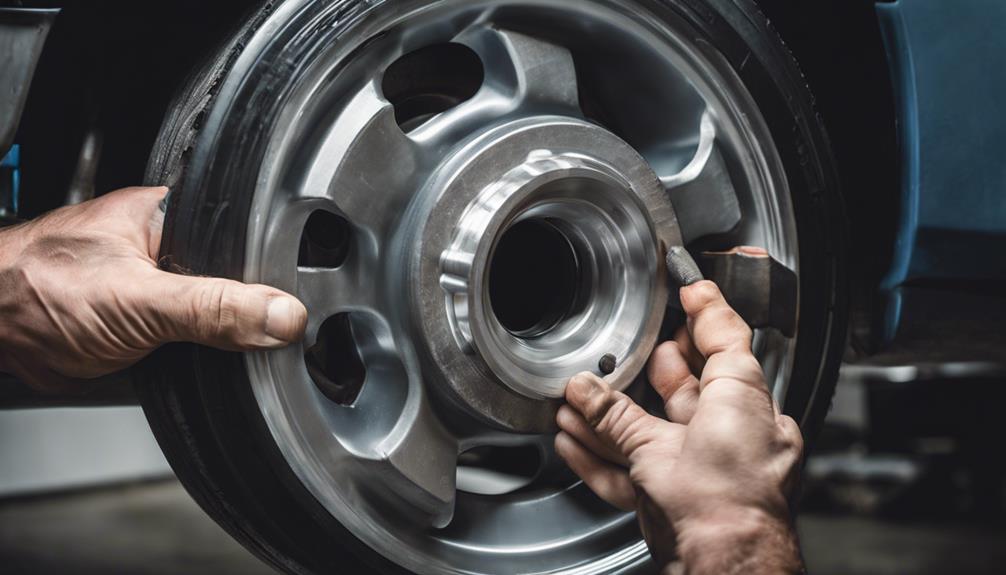
When considering an upgrade to high-performance wheel bearings, prioritize durability and load-bearing capacity for enhanced vehicle performance. High-performance wheel bearings are designed to withstand higher loads and provide better durability than standard bearings. Here are some key points to help you understand the benefits of upgrading to high-performance bearings:
- Superior materials: High-performance bearings are often made from high-grade steel or ceramic, enhancing performance and longevity.
- Improved handling: Upgrading to high-performance bearings can enhance vehicle handling, reduce friction, and improve the overall driving experience.
- Advanced technology: These bearings incorporate advanced technology for smoother operation and better resistance to wear and tear.
- Safety and efficiency: Investing in high-performance wheel bearings can lead to improved safety, reduced maintenance costs, and enhanced driving efficiency.
Consider upgrading to high-performance bearings to take advantage of these benefits and elevate your driving experience.
Consider Sealed Bearings
Consider opting for sealed bearings to enhance the longevity and performance of your vehicle's wheel bearings. Sealed wheel bearings come pre-lubricated, offering superior protection from contaminants to guarantee a longer lifespan. These bearings boast integrated seals that effectively shield against dirt and moisture ingress, thereby enhancing their durability.
By reducing maintenance needs, sealed bearings not only guarantee convenience but also ensure consistent performance over time. Modern vehicles commonly feature sealed wheel bearings due to their reliability and the convenience they offer. Choosing sealed bearings simplifies maintenance routines and contributes to smoother driving experiences.
Make the smart choice by equipping your vehicle with sealed wheel bearings to enjoy the benefits of enhanced longevity, reduced maintenance requirements, and improved performance on the road.
Opt for Professional Installation
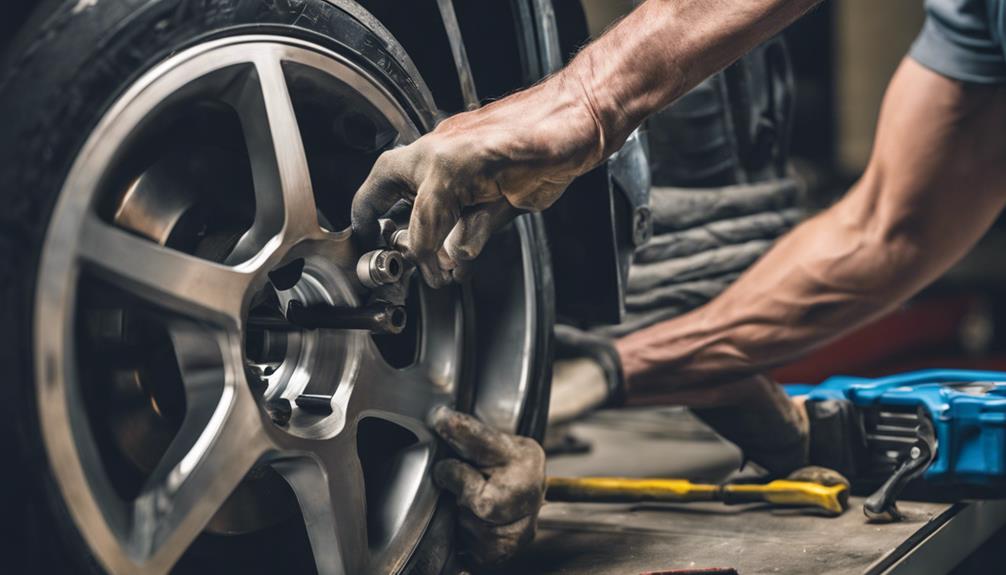
When opting for professional installation of wheel bearings, you guarantee that the mounting processes are executed correctly, preventing premature damage.
Skilled technicians possess the expertise to handle bearings properly, reducing the risk of installation errors.
Choosing certified mechanics guarantees that the new bearings are installed with precision for best performance and long-term efficiency.
Expert Wheel Bearing Installation
For peak performance and durability of your wheel bearings, professional installation is highly recommended. Trained technicians possess the expertise required to guarantee proper mounting, torqueing, and alignment of the wheel bearings. This expert installation greatly reduces the risk of premature wear or damage to the new bearings, ultimately enhancing their longevity. Opting for professional installation can help you avoid common DIY errors that might compromise the performance of the bearings. In addition, professional installation provides peace of mind, knowing that your wheel bearings are installed correctly and will function at their best. Trusting experts for wheel bearing installation is a wise choice to ensure the best results for your vehicle.
- Proper mounting, torqueing, and alignment by trained technicians.
- Expertise in handling complex installation processes accurately.
- Reduced risk of premature wear or damage to new wheel bearings.
- Prevention of common DIY errors affecting bearing performance.
- Peace of mind and assurance of optimal function and longevity.
Certified Mechanics Only
To secure the peak performance and longevity of your wheel bearings, entrusting the installation to certified mechanics is essential. Certified mechanics possess the necessary expertise and tools to guarantee proper installation, including correct torqueing and alignment for peak bearing performance.
By adhering to manufacturer guidelines, certified mechanics help prevent premature bearing failure. Opting for professional installation reduces the risk of improper handling that can potentially damage new bearings. Choosing certified mechanics guarantees a high standard of workmanship, enhancing safety and the lifespan of your wheel bearings.
For a seamless upgrade and peace of mind, rely on certified professionals for the installation of your wheel bearings.
Monitor for Signs of Wear
To effectively identify potential wheel bearing issues, closely monitor your vehicle for key indicators of wear and tear. Keep an eye out for the following signs:
- Listen for unusual noises like grinding or whirring sounds coming from the wheel area.
- Watch out for uneven tire wear, which can indicate worn wheel bearings.
- Pay attention to any wobbling or vibrations in the steering wheel, signaling potential bearing issues.
- Look for ABS warning lights or hot wheels/smells near tires after driving, indicating possible wheel bearing wear.
- Regularly inspect and monitor wheel bearings to catch signs of wear early for timely maintenance.
Frequently Asked Questions
How Do You Break in New Wheel Bearings?
To break in new wheel bearings, confirm proper lubrication for heat tolerance. Follow breaking procedure by driving at varying speeds for 30 miles. Avoid sudden stops or quick accelerations. Monitor for unusual noises. Maintenance tips enhance longevity.
How Do You Extend the Life of a Wheel Bearing?
To extend the life of a wheel bearing, follow proper installation, adhere to lubrication maintenance guidelines, control temperatures, and conduct regular inspections. These practices are vital in maximizing the lifespan and performance of wheel bearings.
What Makes for a High Quality Wheel Bearing?
To guarantee a top-notch wheel bearing, select one crafted from sturdy materials like steel or ceramic and with advanced sealing technology for protection. Search for precise manufacturing, high load capacity, efficient heat dissipation, and noise reduction for peak performance.
What Else Should I Replace When Replacing Wheel Bearing?
When replacing wheel bearings, guarantee proper lubrication, prevent rust, inspect seals, and check axle alignment. Addressing these areas guarantees ultimate performance post-replacement. Don't overlook these essential steps for a smooth and safe ride.
Conclusion
To sum up, after following these 10 best tips for upgrading wheel bearings, you can rest assured that your vehicle will run smoothly and safely.
It's ironic that something as small as a wheel bearing can have such a significant impact on your driving experience.
So, make sure to pay attention to these essential components and make sure they're in top condition for best performance.
Drive safe!

